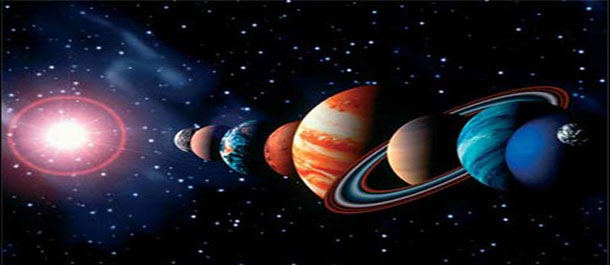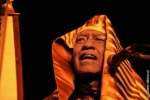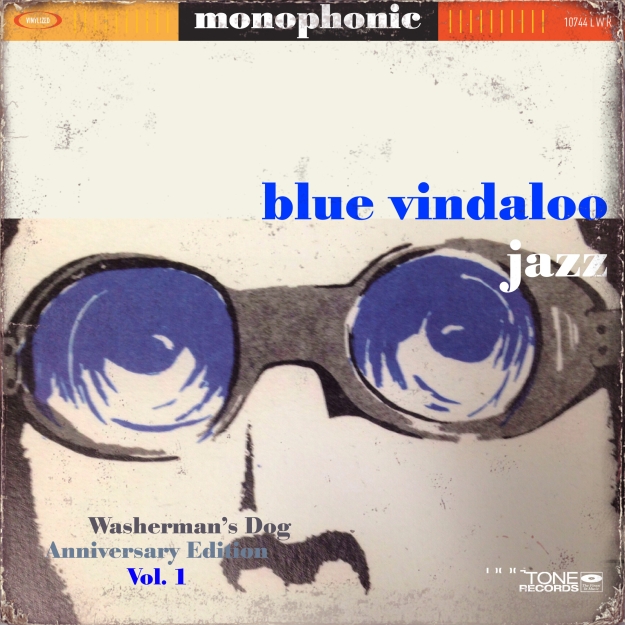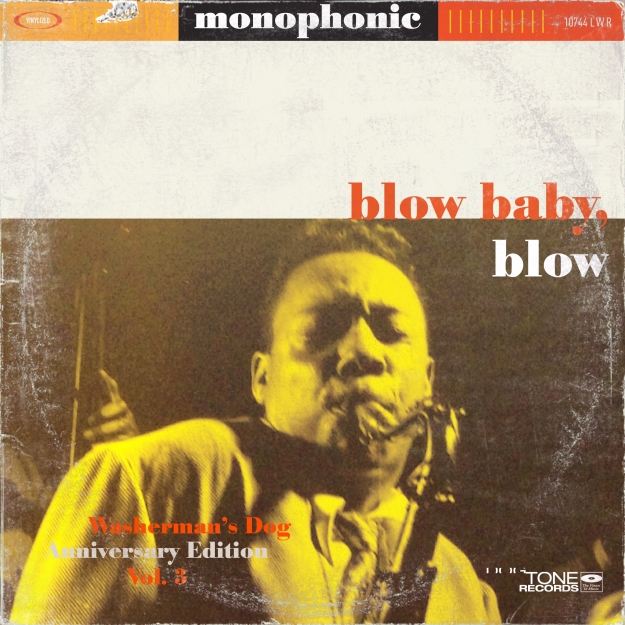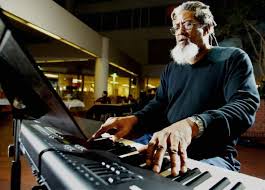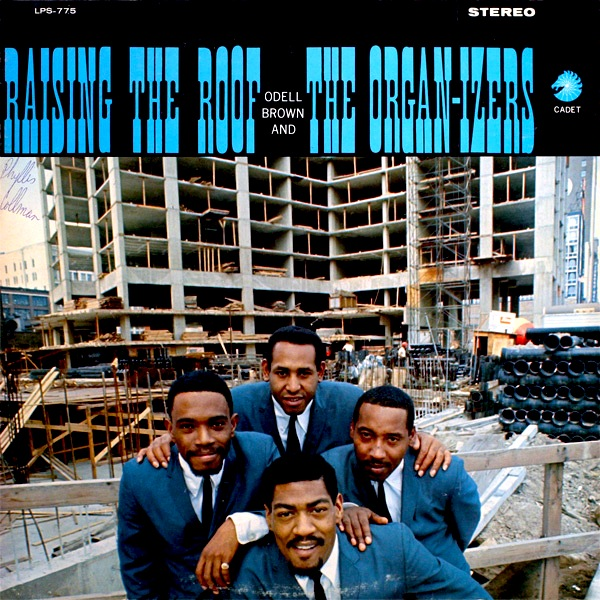
Third instalment of the Washerman’s Dog Anniversary Edition commemorating 700 posts is ready for your enjoyment. In this instalment you will find 100 juicy, emotion-drenched and intense tracks from the R&B, gospel, soul and funk side of town.
Please enjoy!

Track Listing: Hold Me Baby
01 Stand By Me [Aaron Neville]
02 I Need Someone [The Wallace Brothers]
03 Contradiction [Total Experience]
04 One Is The Magic # (Redux) (Live) [Jill Scott]
05 It’s Too Late [The Isley Brothers]
06 Cadillac Jack [Andre Williams]
07 Marvellous [The Jungle Band]
08 On Fire [The Transatlantics]
09 If Loving You Is Wrong I Don’t Want to Be Right [Bobby ‘Blue’ Bland]
10 Break Up To Make Up [Cecil Holmes Soulful Sounds]
11 Cryin’ [J.I. Henderson]
12 Ring Bell, Ring Bell [Mariam Makeba]
13 Hush [The Blind Boys of Alabama]
14 African Hustle [Mombasa]
15 I Don’t Worry about a Thing [Mose Allison]
16 Love & Happiness [Mr.President]
17 Alluswe [Gil Scott-Heron & Brian Jackson]
18 Make It Funky [James Brown]
19 Heaven [Ebo Taylor]
20 California Dreamin’ [Eddie Hazel]
21 (I’ll Know) When True Love Really Passes By [The Ebonys]
22 ‘S Wonderful [Ella Fitzgerald]
23 Bad News, Bad Times [Marion Williams]
24 Billie Jean [Eric B & Rakim]
25 Here Come the Girls [Ernie K. Doe]
26 Jan Jan [The Fabulous Counts]
27 The Rockafeller Skank [Fatboy Slim]
28 Hold Me Baby [Albert Washington]
29 That Thing Called Love [Ray Charles]
30 Losing You [Dusty Springfield]
31 My Soul Has Got To Move [Cleophus Mabone & The Dixie Wonders]
32 Ooh Child [Edwin Hawkins Singers]
33 Never Knew Love Like This [Alexander O’Neal]

Track Listing: You Can Make It
01 How I Got Over [Aretha Franklin]
02 If You Believe Your God Is Dead, Try Mine [The Swan Silvertones]
03 New York Lightning [The Voices of East Harlem]
04 Glory to the Newborn King [Angelic Gospel Singers]
05 Stumblin’ blocks, steppin’ stones (What took me so long) [Joshie Jo Armstead]
06 Thank You, Lord [Alvin Dockett and Blessed]
07 This Old World Is Going Down [Modulations]
08 Jesus Paid the Debt [Sam Cooke with the Soul Stirrers]
09 Jesus Is a Friend to Everyone [The Harmonizing Four]
10 You Can Make It [Shirley Caesar]
11 Young Hearts Run Free [Candi Staton]
12 What Kind of Man is This [The Caravans]
13 In the Ghetto [Rev. James Cleveland]
14 Oh Babe (Live) [Julian ‘Cannonball’ Adderley]
15 Mama Don’t Allow It [Julia Lee]
16 23rd Psalms [Junior Delgado]
17 Nobody’s Fault But Mine [The Staple Singers]
18 All These Things To Me [The Stars of Virigina]
19 Lean On Me [Live] [Bill Withers]
20 (You Keep Me) Hanging On [Ann Peebles]
21 God Shiva [Me’shell Ndegeocello]
22 Loungin’ (feat. Donald Byrd) [Guru]
23 Affirmation [George Benson]
24 Peace Be Still [Rev. James Cleveland]
25 Where Do I Go From Here [Rev. Julius Cheeks & The Four Knights]
26 I’m Going to Live the Life I Sing About in My Sing [Mahalia Jackson]
27 Dragnet For Jesus [Sister Wynona Carr]
28 Up Above My Head There’s Music In The Air [Sister Rosetta Tharpe]
29 Outside Looking In [Jimmy McGriff]
30 Chained In The Mind [Joe Tex]
31 A Losing Battle [Johnny Adams]
32 I Thank You Lord [Little Chris & The Righteous Singers]
33 Ekoléya [Angelique Kidjo]

Track Listing: Black Magic Woman
01 Funkanova [Los Charly’s Orchestra]
02 You’ll Never Find Another Love Like Mine [Lou Rawls]
03 Midnight Creeper [Lou Donaldson]
04 Dancin’ In An Easy Groove [Lonnie Smith]
05 Lalo Caught Me Dancin’ [Llorca]
06 Arabian Song (Da Ghetto Fuckiro Club) [Livin’ in da Ghetto]
07 Who Will Be the Next Fool [Little Jimmy Tyson and the Highway Robbers]
08 Living In The Ghetto [Gamut of Crime]
09 Chicken Run [Speedometer]
10 Could It Be I’m Falling In Love [The Spinners]
11 Crime To Be Broke In America [Spearhead]
12 All The Bass [Spatial Disco]
13 Say it Aint So [The Sound Stylistics]
14 Why Black Man Dey Suffer [Fela Kuti]
15 Goin’ To See My Baby [Fatback Bank]
16 Get Funky (edit) [The Cannibals]
17 Funky Hot Grits [Rufus Thomas]
18 Ain’t No Runnin Away [Willie Washington & Paula Ralph]
19 I Shall Be Released [Marion Williams]
20 Money Jungle [Black Star, Ron Carter and John Patton]
21 Spontaneous Simplicity [Sun Ra]
22 Run On Home And Live With God [Soul Satisfiers of Philadelphia]
23 Black Magic Woman [Orchester Huge Strasser]
24 Live Right Now [Eddie Harris]
25 Pull Man [Marks Mankwane and His Band]
26 Johnny Too Bad [The Slickers]
27 Am I Black Enough for You? [Billy Paul]
28 Shake Your Hips [Slim Harpo]
29 I Got Soul [Skeewiff]
30 Gotta Serve Somebody [Shirely Caesar]
31 Make it Raggae [Shark Wilson and the Basement Heaters]
32 Soul Serenade (Live) [Aretha Franklin and King Curtis]
33 She is the Sea [Anthony Joseph and the Spasm Band]
34 A Love Vibration [Ann Peebles]











